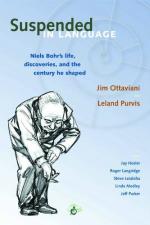|
This section contains 2,409 words (approx. 9 pages at 300 words per page) |

|
Danish physicist
Niels Bohr received the Nobel Prize in physics in 1922 for the quantum mechanical model of the atom that he had developed a decade earlier, the most significant step forward in scientific understanding of atomic structure since English physicist John Dalton first proposed the modern atomic theory in 1803. Bohr founded the Institute for Theoretical Physics at the University of Copenhagen in 1920, an Institute later renamed for him. For well over half a century, the Institute was a powerful force in the shaping of atomic theory. It was an essential stopover for all young physicists who made the tour of Europe's center of theoretical physics in the mid-twentieth century. Also during the 1920s, Bohr thought and wrote about some of the fundamental issues raised by modern quantum theory. He developed two basic concepts, the principles of complementarity and correspondence, both of which he held...
|
This section contains 2,409 words (approx. 9 pages at 300 words per page) |

|


